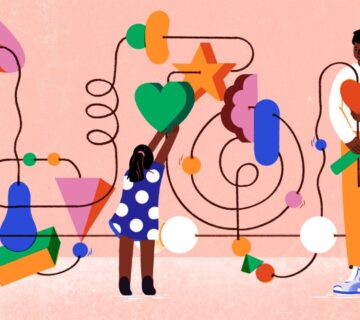The modern workplace is increasingly diverse, with multiple generations working side-by-side. Managing a multigenerational workforce brings rich opportunities but also unique challenges, particularly in fostering seamless collaboration and mutual respect. One foundational solution to these challenges is building harmony connections—empathetic, respectful, and communicative relationships that unite people of different ages and experiences.
This article explores the importance of harmony connections in multigenerational workforces, the barriers that often arise, and practical strategies for leaders aiming to create an inclusive, harmonious workplace that leverages the strengths of every generation.
Understanding Harmony Connections
Harmony connections refer to sustained interpersonal relationships grounded in trust, empathy, and open communication. These connections foster psychological safety and a sense of belonging, enabling employees to engage authentically and collaborate effectively.
In a multigenerational context, harmony connections help bridge differences in values, work styles, communication preferences, and experiences.
Characteristics of Multigenerational Workforces
Today’s workforce typically includes at least four generations:
-
Traditionalists (born before 1946)
-
Baby Boomers (1946-1964)
-
Generation X (1965-1980)
-
Millennials and Generation Z (1981-present)
Each generation brings distinct perspectives, technological fluency, and communication preferences.
Challenges to Harmony in Multigenerational Teams
Differences in expectations, values, and communication often cause misunderstandings. For example:
-
Older generations may prefer formal communication styles and face-to-face meetings.
-
Younger generations often favor informal, digital communication and flexible working environments.
-
Varying attitudes towards work-life balance and career progression can create friction.
Without deliberate effort, these differences can lead to siloed working, reduced trust, and disengagement.
Why Harmony Connections Are Vital
Harmony connections help overcome generational divides by:
-
Promoting mutual respect and valuing diverse viewpoints.
-
Creating open spaces for dialogue where misunderstandings are resolved empathetically.
-
Encouraging collaborative problem-solving that leverages generational strengths.
-
Enhancing employee engagement and reducing turnover across all age groups.
Strategies for Building Harmony Connections in Multigenerational Workforces
1. Encourage Open, Inclusive Communication
Facilitate dialogue that acknowledges differences in communication styles. Use varied channels—from face-to-face meetings to digital platforms—ensuring accessibility and comfort for all.
2. Promote Intergenerational Mentorship
Initiate mentorship programs where knowledge and skills flow both ways. Younger employees can assist with technology, while seasoned workers provide guidance based on experience.
3. Celebrate Diversity of Experience
Organize workshops or informal sessions where generations share their work and life experiences, fostering understanding and respect.
4. Offer Flexible Work Options
Recognize differing needs and preferences regarding work hours, location, and pace. Flexibility demonstrates respect for individual circumstances.
5. Create Shared Goals and Values
Emphasize common objectives and organizational values to unify diverse team members. Align work around purpose to transcend generational gaps.
6. Train Leaders in Emotional Intelligence
Equip managers to recognize and mediate intergenerational dynamics skillfully, promoting harmony and inclusion.
Leveraging Technology Mindfully
Technology can both connect and divide generations. Providing training opportunities and ensuring technology platforms are user-friendly helps maintain harmonious digital collaboration.
Measuring Success
Track employee engagement, satisfaction, and retention metrics by age group to evaluate harmony connection effectiveness. Collect feedback regularly to identify and address ongoing challenges.
Expert Insight
A Deloitte report highlights that inclusive cultures that embrace generational diversity outperform peers by 57% in innovative thinking. Their research reinforces that harmony connections underpin these inclusive cultures by fostering trust and respect [source: Deloitte].
Read More: Harmony Connections vs. Team Building: What’s the Difference?
Conclusion
Building harmony connections in multigenerational workforces is essential for unlocking the full potential of diverse teams. Through intentional communication, mentorship, shared purpose, and inclusive leadership, organizations can bridge generational divides, creating a cohesive, engaged, and high-performing workplace.
Leaders who prioritize harmonic relationships among generations set the stage for sustained innovation and success in today’s evolving labor market.







No comment